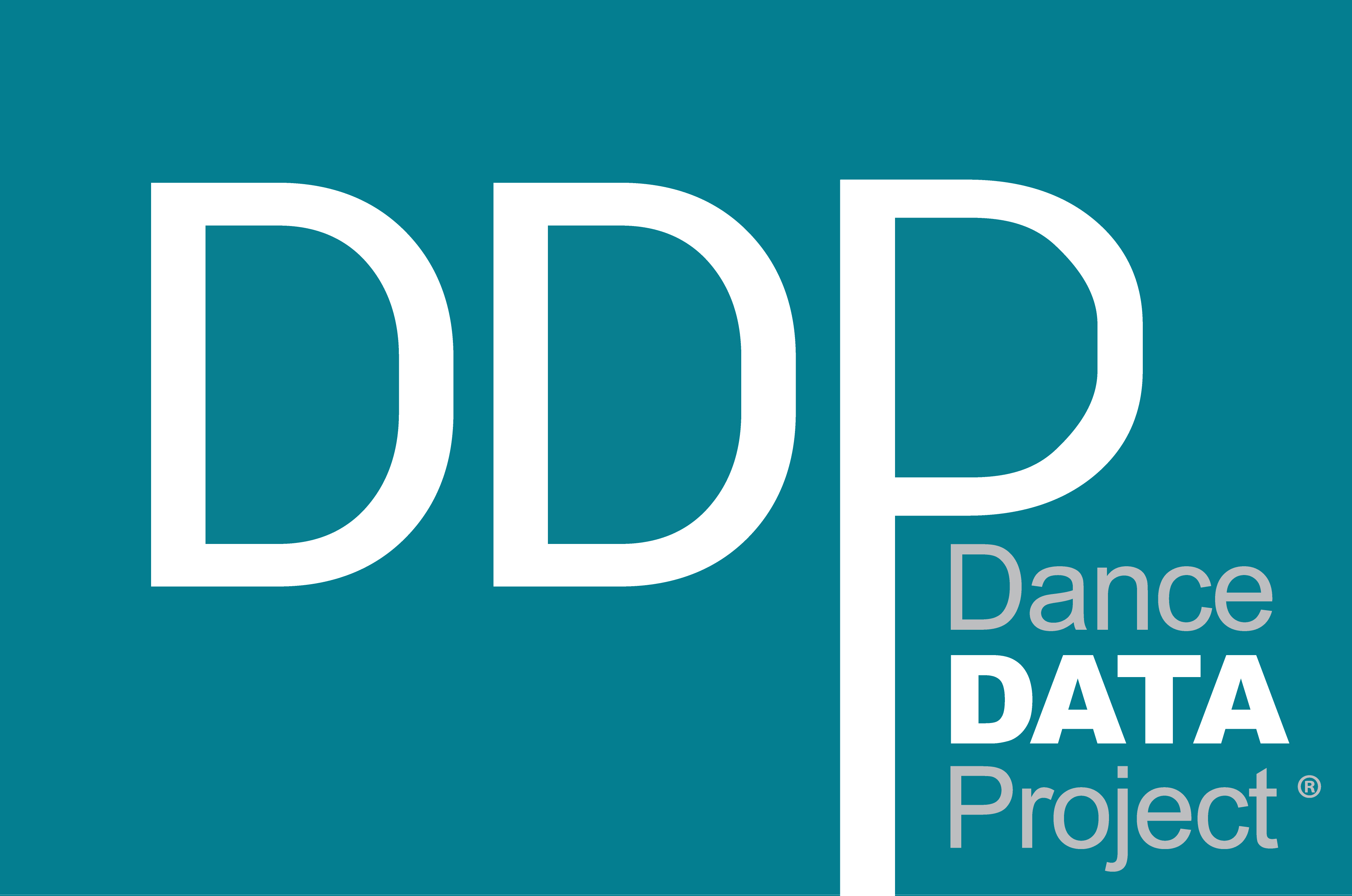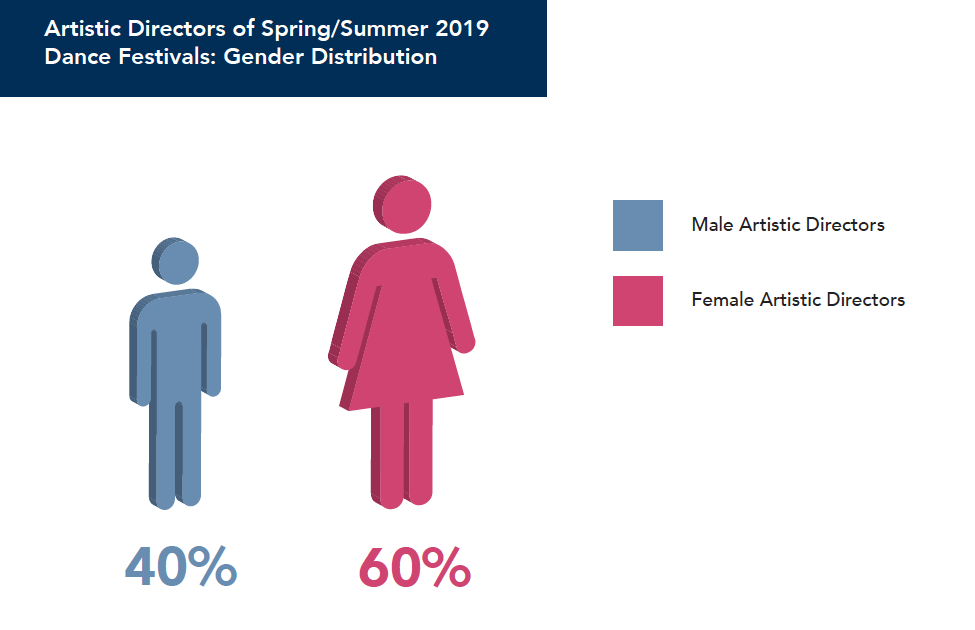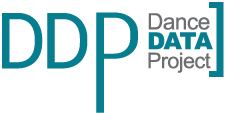Dance Festivals More Welcoming Haven For Women in Leadership, But Men Still Dominate Choreographic Commissions
September 24, 2019 Northfield, Illinois Dance Data Project® (DDP), https://www.dancedataproject.com, released a new study today showing dance festivals offer women more opportunities when it comes to leadership roles. Significantly more women held leadership roles during the spring/summer dance festival season in 2019 than they do in the regular season at the nation’s 50 largest ballet companies. DDP launched earlier this year to highlight gender inequities in leadership positions and pay in the country’s 50 largest ballet companies by providing data as opposed to anecdotal information. In DDP’s sixth study, Spring/Summer Dance Festival Gender Equity Report, data shows that in 2019 60 percent of artistic directors listed for the festivals or their parent organizations were women. This is the first sizable majority of female leadership in a DDP report. Also, 51 percent of board members were women and 42 percent of executive committee members or officers were also women.
However despite the gain in leadership roles for women at ballet festivals, DDP found men still dominated the choreographer positions. Sixty seven percent of the programmed works and 60 percent of festival world premieres for the 22 festivals DDP surveyed this year were choreographed by men. Even so, the festivals still offer more opportunities to women choreographers than the upcoming season of the Top 50 ballets, where 79 percent of works will be choreographed by men. During the past season, 81 percent of the ballets were choreographed by men.
“While it is encouraging to see more female artistic directors, we are disappointed this has not resulted in more choreography commissions for women. Festivals present a unique opportunity to leaders in the dance community. Experimentation is encouraged, and audiences arrive expecting new work and diverse programming, said DDP Founder and President Liza Yntema. “Women are up to the challenge of curating a dance festival or special program, and the next step is to hire more female artists to create and workshop during both the on and off-season.”
The Spring/Summer Dance Festival Gender Equity Report examined a sample of 22 dance festivals in the United States, which DDP and advisors selected based on a number of criteria. Relevant factors include curation of performances outside of a single company’s spring/summer ballet season, staging of at least one classical or contemporary ballet work, and inviting a classical company or dancer from a classical company to perform.
DDP obtained the expenditures of 13 of the 22 festivals and analyzed whether a correlation existed between festival size and inclusion of women in programming or leadership. “There was no indication that larger festivals programmed more work by women or appointed more women to their boards or to the similar leadership position of artistic director,” said DDP Director of Research, Isabelle Vail, “Similarly, there was no relationship between artistic director gender and inclusion of women in programming which is a bit disappointing.”
About Dance Data Project® (DDP) Since February 2019, DDP has now released six data based studies examining gender inequities in the in the country’s 50 largest ballet companies. Women make up seventy percent of the audience and donor base of classical ballet companies. Unlike areas like tech or the sciences, there is a huge pipeline of women in the ballet. Girls outnumber boys in ballet classes approximately 20-1. Yet there are few career opportunities for women beyond performing on stage or teaching. Women rarely get top jobs at the nation’s 50 largest ballets and when they do, they are usually significantly underpaid compared to men who do the same jobs. Learn more at www.dancedataproject.com.





